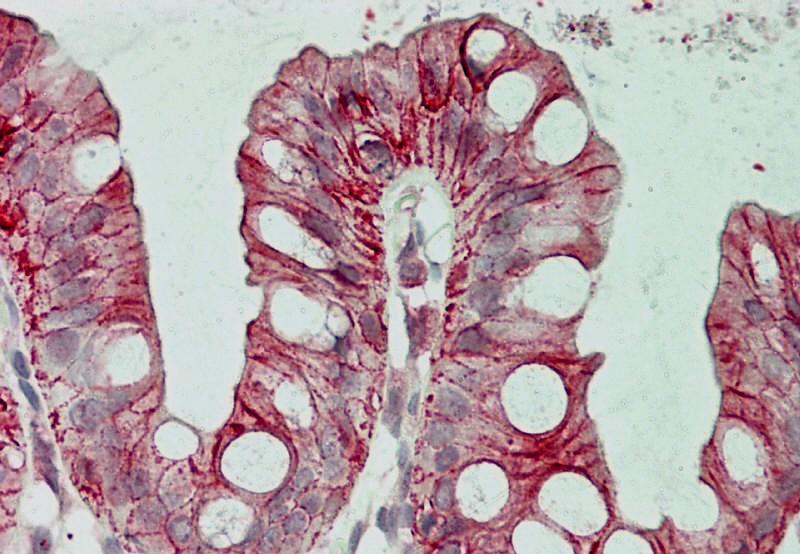Monoclonal Antibody to E-cadherin (Clone: ABM43F8)

Fig-1: Immunohistochemical analysis of E-cadherin in human Kidney tissue using E-cadherin antibody (Clone: ABM43F8) at 15 µg/ml.
Roll over image to zoom in
Shipping Info:
Order now and get it on Tuesday April 29, 2025
Same day delivery FREE on San Diego area orders placed by 1.00 PM
| Format : | Purified |
| Amount : | 100 µg |
| Isotype : | Mouse IgG1 Kappa |
| Purification : | Protein G Chromatography |
| Content : | 25 µg in 50 µl/100 µg in 200 µl PBS containing 0.05% BSA and 0.05% sodium azide. Sodium azide is highly toxic. |
| Storage condition : | Store the antibody at 4°C, stable for 6 months. For long-term storage, store at -20°C. Avoid repeated freeze and thaw cycles. |
Epithelial cadherin (E-cadherin) is a calcium dependent cell-cell adhesion glycoprotein. It is associated with gland formation, stratification, and epithelial polarization. Its deregulation affects cell-cell adhesion and results in increased invasiveness of distinct human carcinomas like gastric cancer, malignancy, oral squamous cell carcinoma, Atypical parathyroid adenoma (APA). Loss of function of E-cadherin leads to the disappearance of epithelial characteristics of the cells and generates higher invasiveness for extracellular matrices. E-cadherin expression is considered to be a decisive indicator for differentiation, aggressive behaviour, high proliferation, metastasis, poor prognosis and invasiveness of human carcinoma cells.
Western blot analysis: 4-6 µg/ml, Immunohistochemical analysis: 5-15 µg/ml
For Research Use Only. Not for use in diagnostic/therapeutics procedures.
| Subcellular location: | Cell junction, Cell membrane, Endosome, Golgi apparatus |
| Post transnational modification: | O-glycosylated. O-manosylated by TMTC1, TMTC2, TMTC3 or TMTC4. Thr-285 and Thr-509 are O-mannosylated by TMTC2 or TMTC4 but not TMTC1 or TMTC3. |
| Tissue Specificity: | Non-neural epithelial tissues. |
| BioGrid: | 107434. 631 interactions. |
|
There are currently no product reviews
|






















.png)












